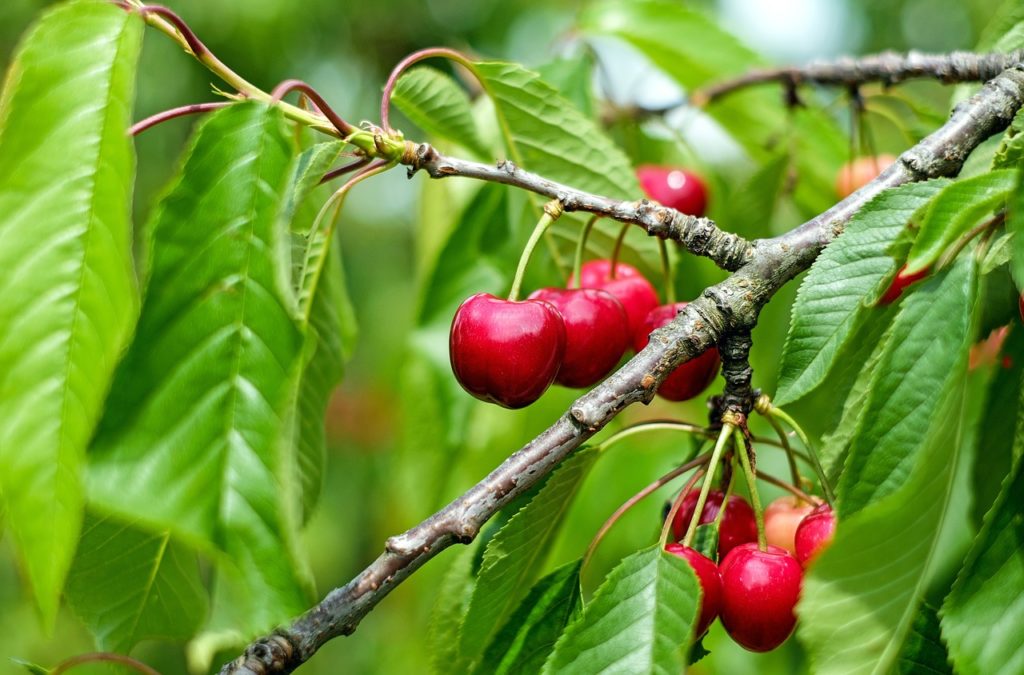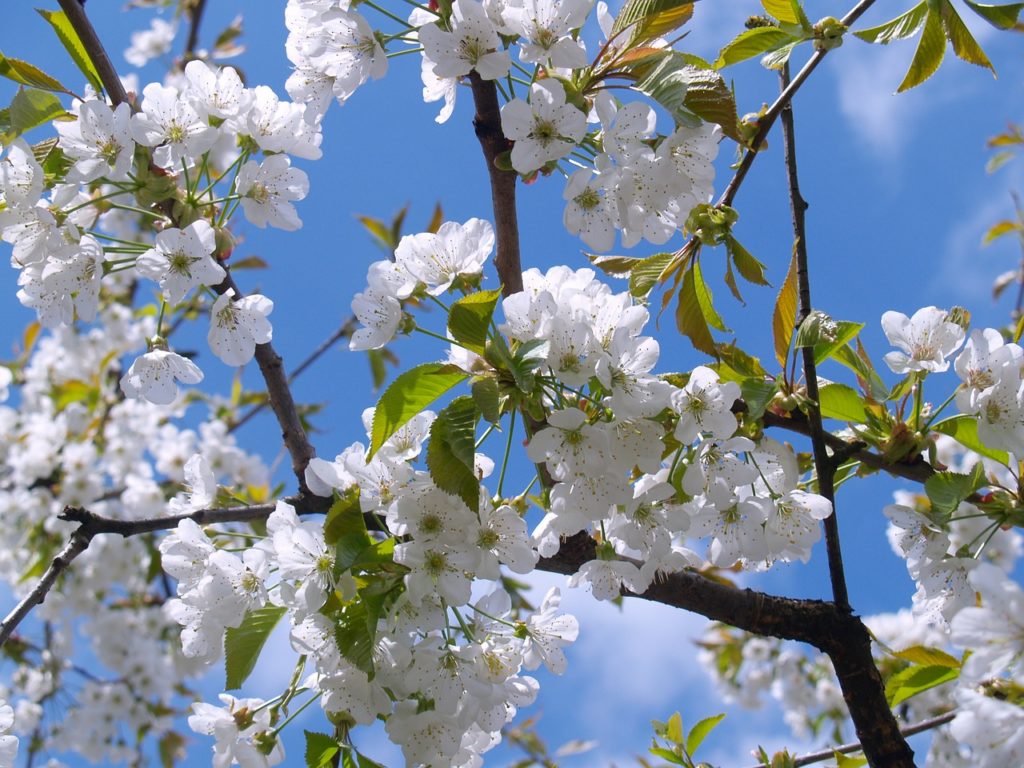How to grow and care for cherry trees
Interested in planting fruit trees? Growing your own fruit can be so rewarding — both because of the beauty and the bounty the trees can provide. Here’s how to grow and care for cherry trees.

A guest post by Emma Metson
If springtime is your favorite season, you may have an uncanny excitement when you see cherry trees. A juicy cherry is a rare treat that you can enjoy for a month or two each year. They make good jams or juices. Some gardeners fantasize about having their own cherry trees where they can enjoy its springtime blossoms and pick its fresh fruit.
If you want one in your garden, we’ll guide you through the process on how to select, plant, grow, and care for a cherry tree.
Types of cherries
There are thousands of varieties of cherries but they can be classified into two types: sweet cherries and sour cherries. Sour cherries are used for baking and cooking, while sweet cherries can be eaten fresh from the tree or when bought at a grocery store.
Sour Cherries
Sour cherries develop in cooler atmospheres and will need around two months of winter temperatures beneath four degrees Celsius. They are firm, which is why they suited for baking or cooking.
If you want to have a beautiful cherry tree for landscaping purposes in springtime, a tree that produces sour cherries might be the best to grow in your garden. Sour cherries are disease resistant, tolerant of cold temperatures, self-fertile and adaptable to poor soil.
Sweet Cherries
Compared to sour cherries, sweet cherries usually have a meaty texture, are rich, juicy with a sweet flavor and can be eaten either fresh, frozen, cooked or dried. They thrive in areas where the temperatures are mild, and the humidity is low. This type of cherry is more difficult to grow. Growing sweet cherries requires access to the more quality soil types, so if your garden soil is comprised mainly of sand or clay then you may struggle to grow this type.
Growing either type of cherry trees requires some difference in care. However, in general, they just need to have good air circulation, an adequate amount of sunlight, and well-drained and fertile soil.
However, cherry trees are vulnerable to root rot. Thus, the soil needs to be well-drained.
Growing a cherry tree
I bet you’ve wondered if you can plant cherry trees from seed. The answer to that is yes. Sure, you have to take a different approach, but growing it from seed is inexpensive and fun. You won’t be able to use the seeds from your store-bought cherries though. Usually, cherries from the grocers are refrigerated, which makes their starting seeds unsuitable for planting.
If you purchase cherries from the farmers market though, you’re in luck. Those seeds can be saved and planted. Taking this route will take longer though. Cherry trees bear fruit in an average of three to seven years, so you will need to wait for your seedling to mature before you can expect a harvest.
If you want to save yourself the hassle of getting your cherry seeds ready for planting, you can get a tree at the nearest garden center in your area. If you want to get quality cherries from the tree, this would be the best option. Garden centers are committed to taking care of plants in your locality. Usually, they would have adequate experience with the local climate, soils and most importantly the plant.
Trees from garden centers are usually one to two-year-old plants, and fruit-bearing will depend on the species of fruit or if it is a dwarf or a standard. The main difference between the dwarf and standard types is how tall they get before the tree bears fruit. Usually, standard types get to 25 to 30 feet tall, while dwarf trees only get to 10 to 15 feet; which makes them easy to maintain.
You need to grow your cherry trees on higher ground as low lying areas get the most frost during early spring. The early blossoms of growing cherry trees are delicate and vulnerable to frost damage.
Cherry tree care
As for tree care, you can take the following steps for caring for your own cherry tree:
- Water your tree. This is by far one of the most critical parts in caring for your trees. For cherry trees, however, they can mostly survive for weeks without water. However, keep in mind that the soil dries up faster when it is hot or windy. Maintain the soil by using a soaker hose around the tree for deep watering. Organic mulch can also help maintain soil moisture.
- Fertilize the soil. Give your tree sufficient nutrients for it to reach its optimal health and fruit production. Spreading a thin layer of compost around your tree to support new growth helps.
- Pruning. Keep your tree healthy and fruitful by balancing the top growth of your tree through pruning. Pruning is the process of cutting away dead branches or stems. This is also important to keep the shape of your beautiful cherry tree.
- Keep pests away. Humans are not the only ones attracted to this shiny, tasty, juicy fruit. Here are a few pests known to attack cherry trees:
- mites
- tree borers
- fruit flies
- birds
- green fruit worms
Over the winter, fungi, viruses, and bacteria lead to diseases like blight, brown rot, and leaf curl. You can control this by utilizing a copper sulfate formula or Bordeaux mixture. Spray the entire trunk and the branches of the tree two or three times during the winter months. However, if fungi or viruses have taken over, take any infested fruit or branches off the tree to stop it from spreading to healthy areas.

Keeping your cherry tree happy and healthy
Now that you have found out the ways of growing and caring for your own cherry tree, you can then decide when you want to add this to your garden. Take note that sweet cherries and sour cherries should not be planted together. As these are two different types, they may not give you the best quality fruit when planted near each other.
You can cover the tree with netting to prevent birds from harvesting your cherries. Installing hanging scaring devices can also do the job. However, if you don’t mind sharing your crops and enjoy the sound of birds in your backyard, you can leave them be.
About the author: Emma Metson is a part-time property developer, part-time home improvements and gardening blogger at Fixtures and Flowers, and full-time Mum. Given her background, Emma has a lot of advice, tips and tricks that she loves sharing on her blog.
